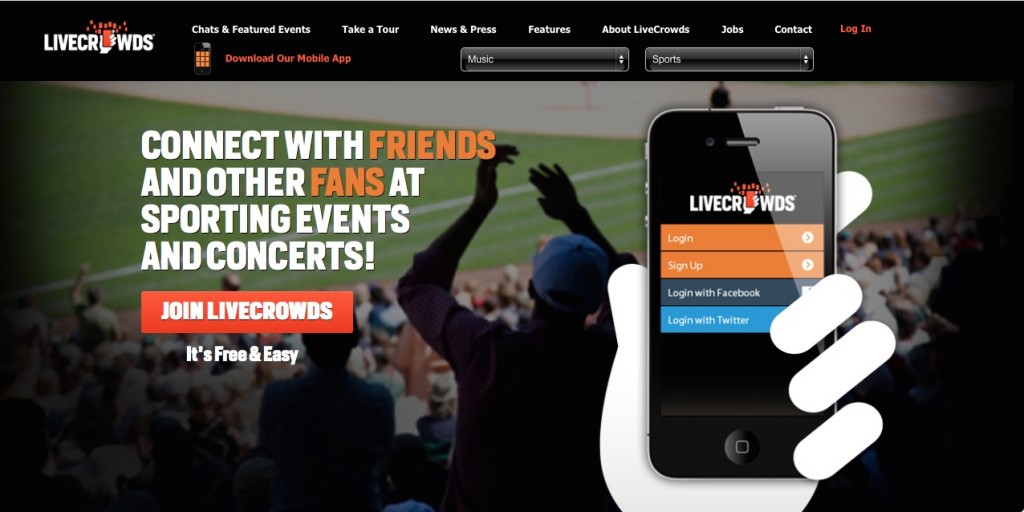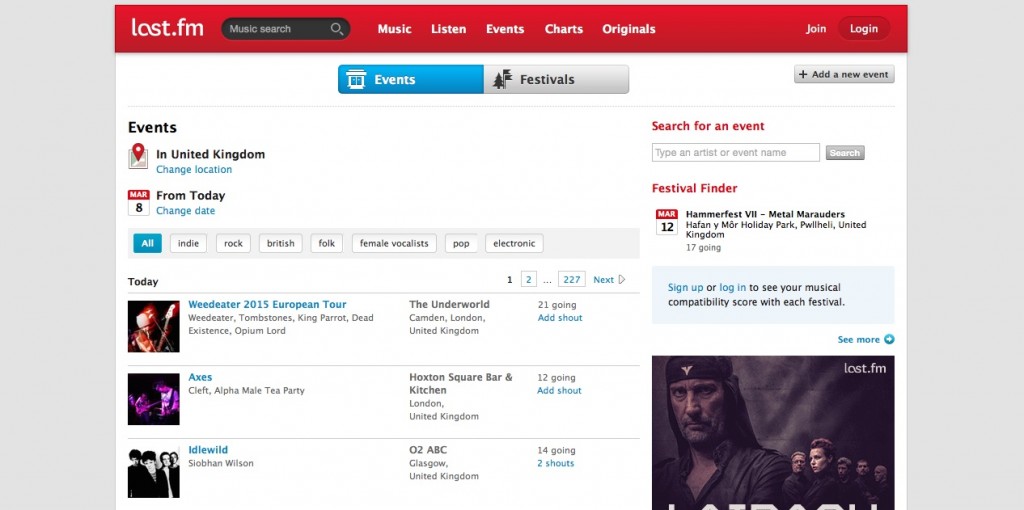When it comes to talking about event-based apps, EventHive is not the only one out there. There are numerous social network apps that are used to link people with specific events and in this blog post Rafeal takes a look at some of them.
Similar Social Networking Services
Primary Event-Based Services
Take for instance 5gig, which is an event-based social network that is focused on music only. In there, people can follow concerts, artists, link to other users, upload photos, videos, send messages, etc. Another example is Bizzabo, a social networking tool for professionals concerned with business events. There is also LiveCrowds, a social media community that serves fans of live crowd events such sports, concerts, theatre and live comedy. LiveCrowds is developed for the North American market and college football is amongst its featured events.
 Secondary Event-Based Services
Secondary Event-Based Services
Additionally, there are other apps that were initially built for different purposes but have an event-handling functionality. The best example for this is Facebook, which has added event functionalities since it began. Users of this social network can create an event page, in which they can specify the name, details, location and time, etc. and invite their friends. Last.fm is also a good example of a secondart event-based service, which was orginally a music streaming website created in 2002. It was 4 years later when they decided to add event functionality, which lets users suggest gigs, submit reviews and photographs of past events, broadcast themselves as attending an event.
 EventHive vs. Similar Social Networking Services
EventHive vs. Similar Social Networking Services
None of these primary events-based apps appear to have had the same impact as other social networking sites whose relationship to events is secondary, such as Facebook, Last.fm, and Instagram. For example according to Alexa.com, most of these event-based apps have a bad ranking in terms of popularity. This relative lack of success for dedicated events-based apps provides an interesting challenge for EventHive in the design of an innovative primary event-based application.
| Application | Global Rank |
| 5gig.com | 504,834 |
| Bizzabo.com | 106,775 |
| LiveCrowds.com | 8,584,933 |
| Facebook.com | 2 |
| Last.fm | 1,366 |
“Being in the Moment”: EventHive as an At-Event Service
Both Bizzabo and LiveCrowds begin to emphasise the at-event experience of using their application. Bizzabbo includes real time agendas for business events, real time polls and surveys and one-to-one messaging functionality. Similarly, LiveCrowds has its CrowdPower feature, which includes real-time event streams, competitions, and crowd chat features. In comparison, Last.fm and 5gig are do not appear to integrate themselves into the event exeprience and would a be service one might use ahead of attending an event.
EventHive would like to build upon these types of at event features and become both an at-event service, where a lot of interaction with the application occurs at an event in real time, as well as an application one might use ahead of attending an event. Much of EventHive’s at-event services will take advantage of GPS location services as well push notifications to mobile devices.
“We Are the Middleman”: Introducing Event Interactivity
Our review of sites such as 5gig.com and Last.fm found an absence of interaction amongst application users and between the user and the application. Rather, the sites serve more as information portals and directories for upcoming consumer events, and comment boxes are the site’s primary communicative component e.g. Last.Fm’s “Shoutbox” comment thread. 5gig.com does allow for the creation of user profiles, but this functionality does not appear to be prioritised.
In contrast, EventHive will facilitate bi-directional interaction – we are the middleman – between the various human and nonhuman actors that make an event, an event. Amongst other things, EventHive will allow users who are at the same event to communicate with each other. We will send notifications to the app user of at-event promotions for merchandise and refreshment, allowing vendors to interact with users. And EventHive will host media content associated with attended events, allowing users to interact with media content and vice-versa.
Identifying Noveler Forms of Attendee Value
Arguably, a lot of the value that both primary and secondary event-based services bring is organisational convenience and efficiency – they save time, in other words. Sites such as 5gig and Last.fm are a directory of concerts and allow visitors to find ticket vendors through the site, which makes finding and attending concerts more convenient. In addition, LiveCrowd has its MyEvents feature which allows the user to organise and schedule the events they want to attend.
However, this type of added value is arguably not very incentivising; the only reward is saved time. In contrast, EventHive will need to explore ways in which it can add noveler forms of value for the user. We could introduce at-event promotions for vendors and merchandise sellers so app users get monetary rewards and we could use GPS to personalise any offers by location. In addition, EventHive could build upon the value of its user-generated repository of event-related media content (videos/pictures) and allow users to interact with this content more.
Summary
We have explored a range of social networking sites that orient towards consumer events and we have categorised them as primary and secondary event-based services. We identified three themes from which EventHive could attempt to differentiate itself from the competition. These three themes, temporality, interactivity and value, were three features of existing services where novelty and innovation was to some extent lacking. If EventHive is able to contribute something novel to these areas, we could become a serious contender in the event-based application’s future.

No comments yet.